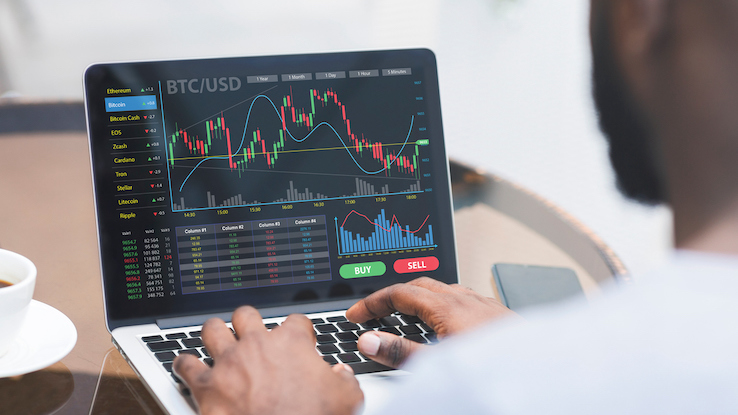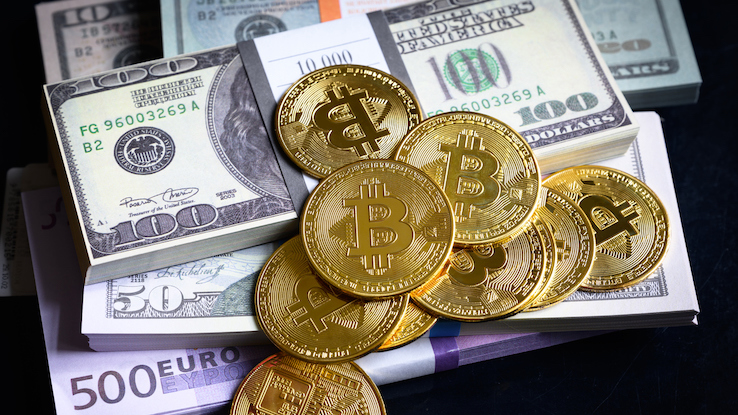
Cryptocurrency has gone through exponential expansion in recent years, transforming it from somewhat of an unknown financial entity into a widely recognized asset. The stablecoin market has grown along with that of cryptocurrency, in part because it’s the go-to mechanism that people use to access their cryptocurrency supply.
This means that, while the big names in crypto are being traded at higher and higher rates and in transactions that can total hundreds of millions of dollars every day, other types of coins — like USD Coin (USDC), Paxos Standard (PAX) and Tether (USDT) — are also experiencing growth. These three coins happen to be the top three choices in the stablecoin market. But what exactly are stablecoins, and why do we need them?
What Is a Stablecoin?
On the whole, cryptocurrency is widely considered a volatile type of investment due to the different coins’ wide fluctuations in value. Stablecoins, at their most basic level, are a type of cryptocurrency coin designed to maintain a more stable price over time to eliminate some of that volatility, hence the name. They’re a way of keeping your money within the crypto ecosystem, but you’re much less likely to experience any of the wild fluctuations in value that cryptocurrency is known for. They are often pegged to fiat currency (legal tender issued by the government, such as U.S. dollars). As an example, USDC is set up to follow the U.S .dollar. So, one USDC is equal in value to $1.
Why Do We Need Stablecoins?
The main reason that stablecoins exist is to provide a bridge between money that you can hold in your hand — paper currency like U.S. dollars — to digital cryptocurrencies like Bitcoin. Using a stablecoin like USDC, you can exchange the money in your bank account for digital money of the same value without worrying that it’ll drop 10% of its worth immediately. It also allows you to invest money into the crypto ecosystem, and you can use it as you see fit from there. Stablecoins present a safe way to purchase crypto that’s more likely to maintain its value.
Stablecoins live on the blockchain, and their purpose is to show how the various crypto coins are valued when compared to fiat currencies like the Euro and the U.S. dollar. In the case of USDC, you can almost think of it as a digital U.S. dollar.
Understanding Stablecoins With a Quick Analogy

Bitcoin is the most popular cryptocurrency in the world and is the largest by market cap by a significant amount. This more than likely isn’t going to change anytime soon, but that doesn’t mean it’s a safe — or low-risk — investment. Bitcoin’s values have been highly volatile throughout its existence, fluctuating by 50% or more during a calendar year. Swings in value of 10–15% are common for Bitcoin and can happen over the course of just an hour or two.
Recently, some traditional assets have been exhibiting similar behavior. One example is crude oil, which went into negative value for some time during the initial months of the COVID-19 pandemic. This volatility in the short term is what shows the need for a stablecoin, similar to selling your traditional assets for cash. Stablecoins are used to show the fluctuations of cryptocurrencies like Bitcoin while remaining at even prices. It’s fairly accurate to compare cryptocurrencies and stablecoins to traditional assets like crude oil and the U.S. dollar.
Most stablecoins are set up to mimic the various fiat currencies in the world, so they do factor in an inflation rate of around 2% per year. Otherwise, holding a stablecoin has the potential to protect you from inflation.
What Creates the Price Stability?
The reason that stablecoins can maintain their steady values is mainly due to the reserves that back the coins. As an example, the New York State Department of Financial Services regulates coins like the Pax Dollar. The manager of a particular stablecoin takes actions in the market with the reserves to ensure that the value stays the same as the fiat currency to which the coin is pegged. For example, the fiat currencies that track the U.S. dollar are pegged to underlying assets like gold and forex reserves. These relatively steady assets act as collateral for the stablecoins and prevent most short-term volatility.
There are cases in which stablecoin managers have to jump in to maintain the supply of and demand for the currency, and they achieve this by changing the interest rates or increasing the amount of money in circulation. The stark difference between stablecoins and cryptocurrency here is that a currency like Bitcoin is backed by absolutely nothing and there’s no regulatory framework in place to protect it. The value of Bitcoin is determined by how much value people think it has, so the more popular the Bitcoin is, the more expensive it tends to be. If people lose interest or faith in Bitcoin and begin selling it off at higher frequency, the price of Bitcoin comes down. That is the only factor that affects its value.
However, cryptocurrencies like Bitcoin were not made to simply be stable assets — they were designed to eliminate the presence of a central controlling bank for online transactions. The technology that they operate with is completely different from that of fiat currencies or stablecoins. There’s also a limited supply of Bitcoin. Stablecoins aim to bridge some of these gaps.
What Are the Different Types of Stablecoins?

Stablecoins can be critical for bridging the gap between the real world and the digital one — in terms of currency. There are three different types of stablecoins currently available:
Fiat-Collateralized Stablecoins
This is the stablecoin we’ve discussed throughout most of this article. It keeps various types of collateral, like the U.S. dollar, gold, silver, oil, investment products like ETFs and others in order to issue coins. Most fiat-collateralized stablecoins use dollars as their reserves.
Crypto-Collateralized Stablecoins
These stablecoins are backed by other types of cryptocurrencies. Because these stablecoins are backed by reserves that experience high levels of volatility, they’re usually “over-collateralized.” This essentially means that a large supply of the cryptocurrency is maintained as reserves. This is done so there’s always enough of it accessible to maintain the stablecoin’s price, even when the value of the reserve crypto drops.
Non-Collateralized (Seigniorage) Stablecoins
These stablecoins don’t have any collateral; their price is kept stable by algorithms. The algorithms operate in a similar way to central banks, and they expand and contract the supply of coins similar to the ways banks distribute and destroy physical money. These are the least common (and typically least popular) stablecoins due to their complexity and late entry onto the market.
Stablecoins are playing an essential part in the growth of cryptocurrency. They make it easier for new cryptocurrency investors to understand how it works. They’ll likely continue to improve as time goes by, as they’re still relatively new but their tangible nature cements them as the backbone for this new ecosystem. This familiarity and the added security are what fill them with potential for the future, and it’ll be interesting to see how they evolve.





